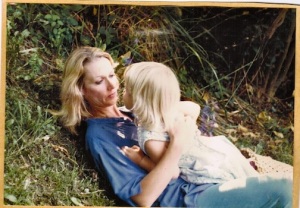I first met Chloe Honum in a summer workshop, after which the teacher asked me who I thought the most talented poet in the room was. I immediately named Chloe, whose poems haunted me long after we left the workshop room, and whose poems I hoped to publish in Memorious. Since then, she has been awarded a Ruth Lilly Fellowship and her poems have appeared in such places as Poetry Magazine and The Paris Review. She has been awarded fellowships to the MacDowell Colony, the Kerouac House, and Djerassi. Three of her poems appeared in Memorious in 2011, and now, three years later, those poems have a home in her beautiful debut collection The Tulip Flame, which Tracy K. Smith wisely chose as the winner of the 2013 Cleveland State University Poetry Center First Book Prize.
This is not an erratic collection of a new poet cutting her teeth: this is a book to be read in one sitting, so that you can be held in Honum’s delicate and gripping spell of language.The collection is a highly lyrical reach back into personal history, circling around her mother’s suicide, and Honum draws on the natural world and the world of ballet for her sparse and memorable imagery. The Tulip Flame is one of the must-read collections of 2014.
Chloe generously answered a few questions for us.
Can you tell us about the process of writing The Tulip Flame and finding a home for it?
The submission process can be daunting, and I think it’s important to trust that the work will find its way. I began sending the manuscript out in 2012, and I tried to greet the process with a lot of patience and trust. I’m honored to have landed at Cleveland State University Poetry Center. My editor there, Frank Giampietro, let me into all sides of the process; he was amazingly attentive and giving with his time.
You repeatedly return to the world of ballet in this collection. What was it like to bring this art into language? Has your study of ballet influenced your approach to writing?
I hope I carry into my writing some of the discipline I learned from studying ballet, especially in regard to pushing through the discomfort of facing my inadequacies. Practice could be draining, but I’ll never forget the first time I mastered a triple pirouette. It gave me a sensation of transcendence, and I’ve been so thankful to continue to find that sensation—however fleeting and rare—in writing poetry.
You were raised in New Zealand. Did the literature and landscape of New Zealand shape your writing at all?
I was raised on the North Shore of Auckland, where both my parents were born. The beauty of that landscape is staggering, and it was deeply intertwined with our lives, with all our joys and sorrows. In The Tulip-Flame, I’m interested in the relationship between beauty and pain, in the spark that happens when the two cohere.
This is a book that holds grief at its core. Are there poets you have turned to for their handling of grief, of loss?
Over the years, I returned often to certain poems about loss. Here are a few of them.
“The Voice,” by Thomas Hardy
“The Dream,” by Marie Howe
“Separation,” by W.S. Merwin
“Requiescat,” by Oscar Wilde
“To the Young Who Want to Die,” by Gwendolyn Brooks
What question would you want someone to ask about your book? And would you answer that for us?
How about: What do you keep near your writing desk?
This photograph of my mother and me, taken in 1985.
What are you are working on now?
It’s a bit early to say. I’m drafting a lot these days, seeing what comes.
-Rebecca Morgan Frank, Editor
For original poetry, fiction, interviews, art, and art song, please visit our magazine at www.memorious.org.

